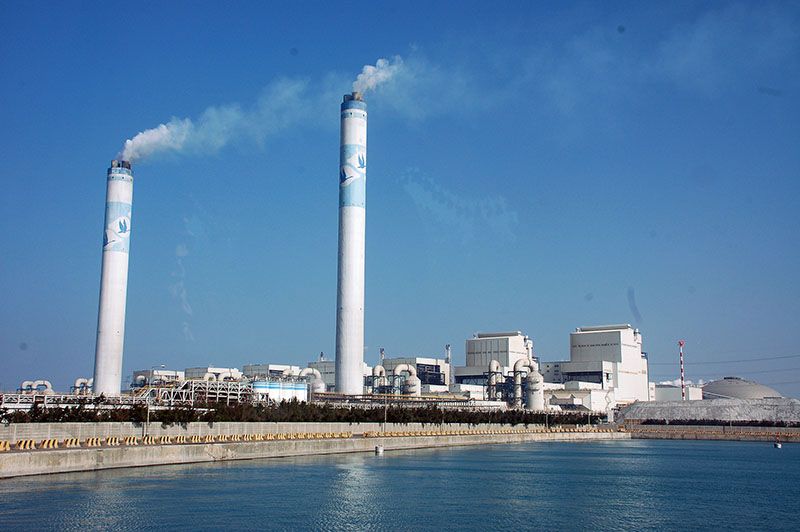Desalination in a Rainforest: Taiwan Faces Water Shortages
Published on by Water Network Research, Official research team of The Water Network in Technology
Taiwan is the world’s rainiest developed country, but an insufficient storage system is forcing big users to consider desalination of seawater as a viable water source.
 The Formosa Plastics Group (FPG) recently won Environmental Impact Assessment approval for a desalination plant to produce fresh water from seawater at its Mailiao industrial complex in Yunlin. The company is reportedly teaming up with Israeli-firm IDE technologies to design the plant, which will reportedly cost NT$5.4 billion (US$184.36 million) and would produce between 20,000 and 105,000 tons of desalinated water daily for industrial purposes.
The Formosa Plastics Group (FPG) recently won Environmental Impact Assessment approval for a desalination plant to produce fresh water from seawater at its Mailiao industrial complex in Yunlin. The company is reportedly teaming up with Israeli-firm IDE technologies to design the plant, which will reportedly cost NT$5.4 billion (US$184.36 million) and would produce between 20,000 and 105,000 tons of desalinated water daily for industrial purposes.
Environmentalists have criticized FPG for using too much water from Nantou County’s Jiji Dam reservoir, prompting the company to look for alternative water sources, including desalination. Desalination technology is progressing steadily, and is being deployed in several countries in the world, notably Australia, Israel, and Saudi Arabia. These countries are all located in desert regions, though, where water scarcity makes desalination worth the high costs and energy consumption, and their high water prices reflect this situation.
In Israel, where 40% of the supply is from desalination, water costs the equivalent of NT$54.18 per cubic meter. Singapore, with little space for surface water, is another heavy user of desalinated seawater, getting some 25% of its water from desalination. After prices hikes last July, the first in nearly 20 years, Singapore’s National Water Agency is planning to increase the price further o the equivalent of NT$60.94-$82/cubic meter.
Taiwan, on the other hand, receives on average 2,500 millimeters of rainfall every year, the most of any OECD-equivalent country. Industrial users pay as little as NT$11/cubic meter.
So why is subtropical Taiwan even considering deploying desalination, even in small amounts?
The main reason is not lack of rainfall, but lack of storage capacity. Taiwan can store only about a month and a half’s water requirement before its reservoirs run dry, and depends on its generally frequent rains to resupply the storage capacity on a regular basis. That is what usually happens, but not always. Taiwan faced water shortages each year from 2002 to 2005, and again in 2009-2011, as well as 2014 and 2015.
Taiwan has 18 major reservoirs, but many of them have seen their storage capacity dramatically curtailed by silting. An investigative report into Taiwan’s water situation by CommonWealth Magazine discovered that overdevelopment in the watershed of Shimen Reservoir – ranging from ginger farms and peach orchards to illegally constructed resorts – has led to higher erosion. Soil is washed into rivers which flow into the reservoir, where it collects before the dam. Silt accumulated in Shimen has decreased its water storage capacity by as much as a third. Six of Taiwan’s major reservoirs already have similar levels of silting.
With global warming leading to less frequent but heavier and more intense rainfalls, further erosion and more landslides can be expected, worsening the problem. 2015’s drought, the worst in 67 years, finally came to an end in August that year when Typhoon Soudelor lashed the island. Soudelor was quickly followed by several other typhoons that same season.
Dredging is one potential solution, but is prohibitively expensive, with media reports putting the cost of dredging Shimen Reservoir’s estimated 100 million cubic meters of silt at over NT$50 billion (US$1.7 billion).
Building new dams to create additional reservoirs is considered highly unlikely as the best locations have already been utilized. Taiwan’s steep mountains and lack of extensive riverine system also results in most rainfall washing into the sea. According to the Water Resources Agency (WRA) under the Ministry of Economic Affairs (MOEA), of the 93.6 billion tons of rainfall that Taiwan receives annually, 57% runs off directly into the sea, while another 24% is lost to evaporation.
Reservoirs make up only around a quarter of Taiwan’s fresh water supply, with rivers providing nearly half and groundwater extraction another 30%, according to the WRA.
Other factors that contribute to Taiwan’s water issues include old, leaky pipelines and aging infrastructure, leading to losses throughout the system. Low water prices have discouraged both conservation and investment in infrastructure.
Yeh Chang-chen, assistant research fellow at the Chung-Hua Institution for Economic Research (CIER), recalls that while visiting a factory in southern Taiwan, he asked whether the plant had installed water purification technology to recycle its wastewater. The factory owner replied: “Why should I? The technology is so expensive and water is so cheap.”
“The price of water needs to be more reasonable, which will encourage water conservation,” Yeh observes. “But for politicians, higher water prices mean political suicide.”
Attached link
https://topics.amcham.com.tw/2018/04/desalination-in-a-rainforest-taiwan-faces-water-shortages/Media
Taxonomy
- Water
- Environment
- Climate Change
- Desalination
- Sea Water Filtration
- Sea Water Desalinisation
- Desalination Plant